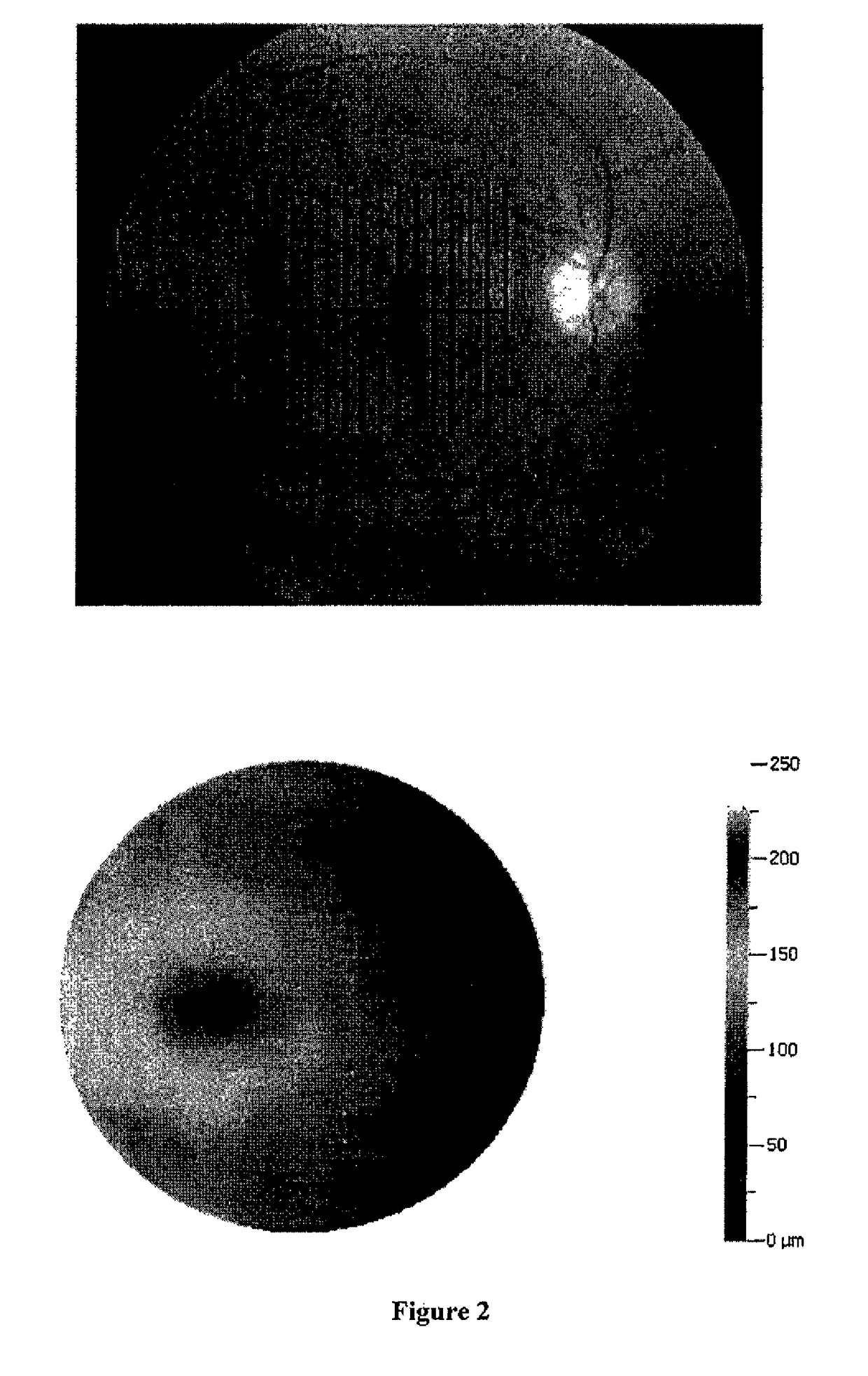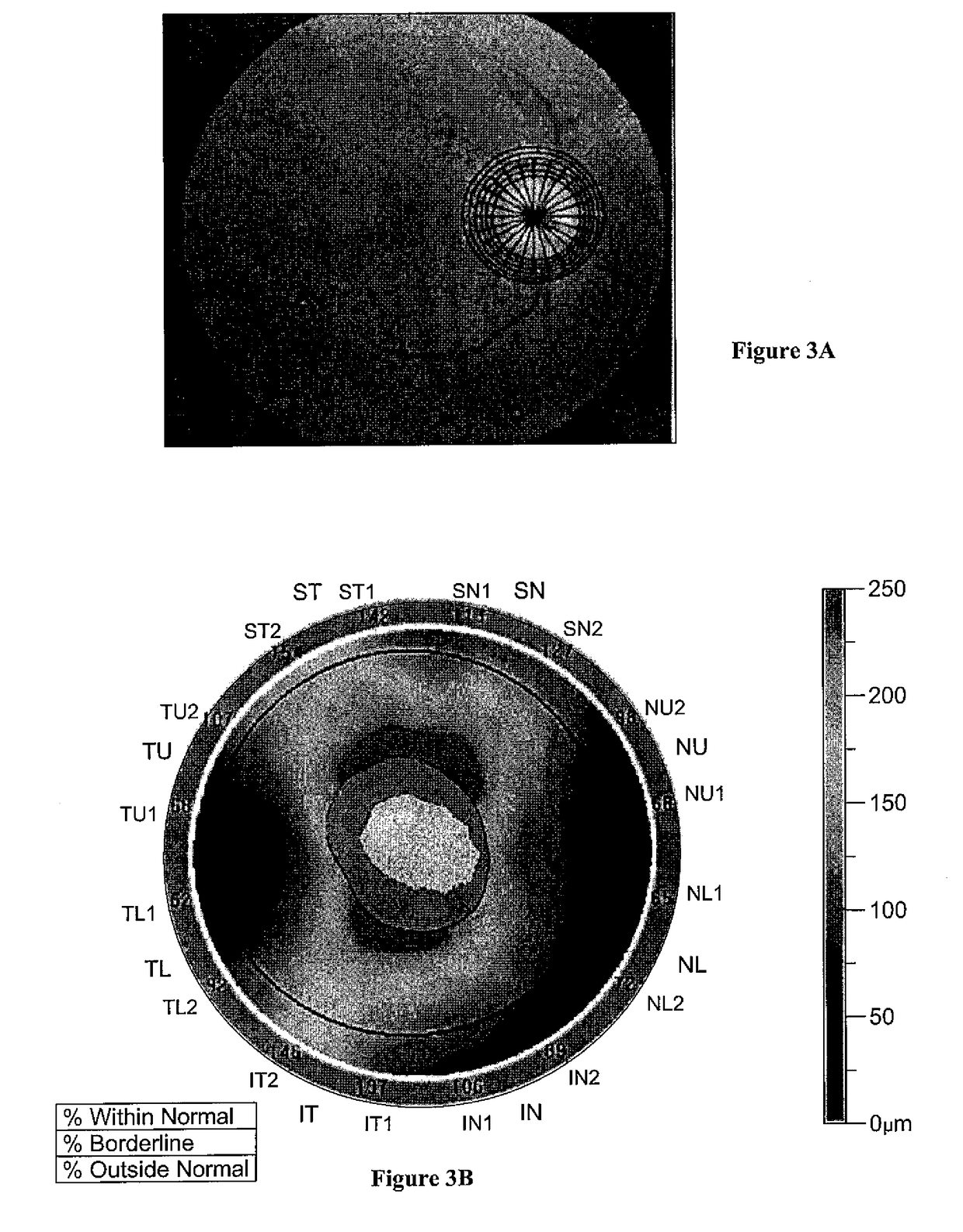Methods for diagnosing glaucoma utilizing combinations of FD-OCT measurements from three anatomical regions of the eye
a technology of fd-oct and combination, applied in the field of glaucoma diagnosis, can solve the problems of information crisis, difficult to interpret and combine diverse sources of information to arrive at meaningful clinical diagnosis, and often miss the early stages of the disease, etc., to achieve easy administration and operation, high glaucoma diagnostic sensitivity and specificity, and easy deployment
- Summary
- Abstract
- Description
- Claims
- Application Information
AI Technical Summary
Benefits of technology
Problems solved by technology
Method used
Image
Examples
example
Three Steps to Combine FD-OCT Parameters from Three Anatomic Regions
Step 1: Combine Parallel Parameters Across mGCC, ppNFL and Rim Regions
[0081]To generate “across region” parameters, a simple method that combines parallel parameters for FLV, GLV, GPCC and PCV across mGCC and ppNFL regions by a weighted sum was considered. This method was computationally inexpensive. The weight was one for each region. It was evaluated by AROC analysis such that the “across region” parameters were combined additively with weight one if no statistical difference between the AROC values of parallel parameters. The weights were proportional to the AROC's and were summed up to two as the statistically difference of AROC values was observed.
Step 2: Combine Inferior, Superior and Overall Region Information
[0082]A global variable from the three across-region GPCC parameters was defined to indicate the worst structural loss reflected by GPCC parameters (maximum among the three GPCC parameters) and denoted b...
PUM
 Login to View More
Login to View More Abstract
Description
Claims
Application Information
 Login to View More
Login to View More - R&D
- Intellectual Property
- Life Sciences
- Materials
- Tech Scout
- Unparalleled Data Quality
- Higher Quality Content
- 60% Fewer Hallucinations
Browse by: Latest US Patents, China's latest patents, Technical Efficacy Thesaurus, Application Domain, Technology Topic, Popular Technical Reports.
© 2025 PatSnap. All rights reserved.Legal|Privacy policy|Modern Slavery Act Transparency Statement|Sitemap|About US| Contact US: help@patsnap.com



